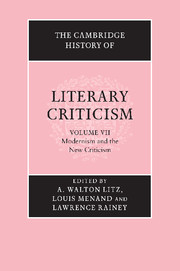7 - The Harlem Renaissance
from THE MODERNISTS
Published online by Cambridge University Press: 28 March 2008
Summary
If nothing else, the Harlem Renaissance was productive of controversy. During the relatively brief period of its active life, from the early 1920s to the early 1930s, it provoked a number of notorious literary battles. Contention ranged from specific works like Claude McKay's Home to Harlem and Carl Van Vechten's Nigger Heaven to the movement as a whole, which was characterised by its proponents as a new beginning in African-American life and by its critics as race betrayal or, in George Schuyler's words, mere hokum. Thus the Renaissance, even more than most self-conscious literary movements, generated and depended upon literary criticism. Such criticism was even more crucial for the Harlem movement because the battle to judge and define its productions was a racial and political as well as a literary one. To a very great extent this remains true: disagreements about the Renaissance usually do not concern the particulars of individual works but rather the significance of the movement as a whole. Thus Houston Baker's polemical defence, Modernism and the Harlem Renaissance, is not about Langston Hughes, Jean Toomer, and Zora Neale Hurston, but rather about Booker T. Washington, W. E. B. Du Bois, and Alain Locke, polemical and critical writers whose importance lay in the way they interpreted and presented to the nation the achievements of African America.
The most significant literary criticism of the Harlem Renaissance, therefore, has to do not with individual works but with the movement as a whole, not with matters of literary form and execution but rather with the role of literary art in the larger political and social world.
- Type
- Chapter
- Information
- The Cambridge History of Literary Criticism , pp. 167 - 178Publisher: Cambridge University PressPrint publication year: 2000



